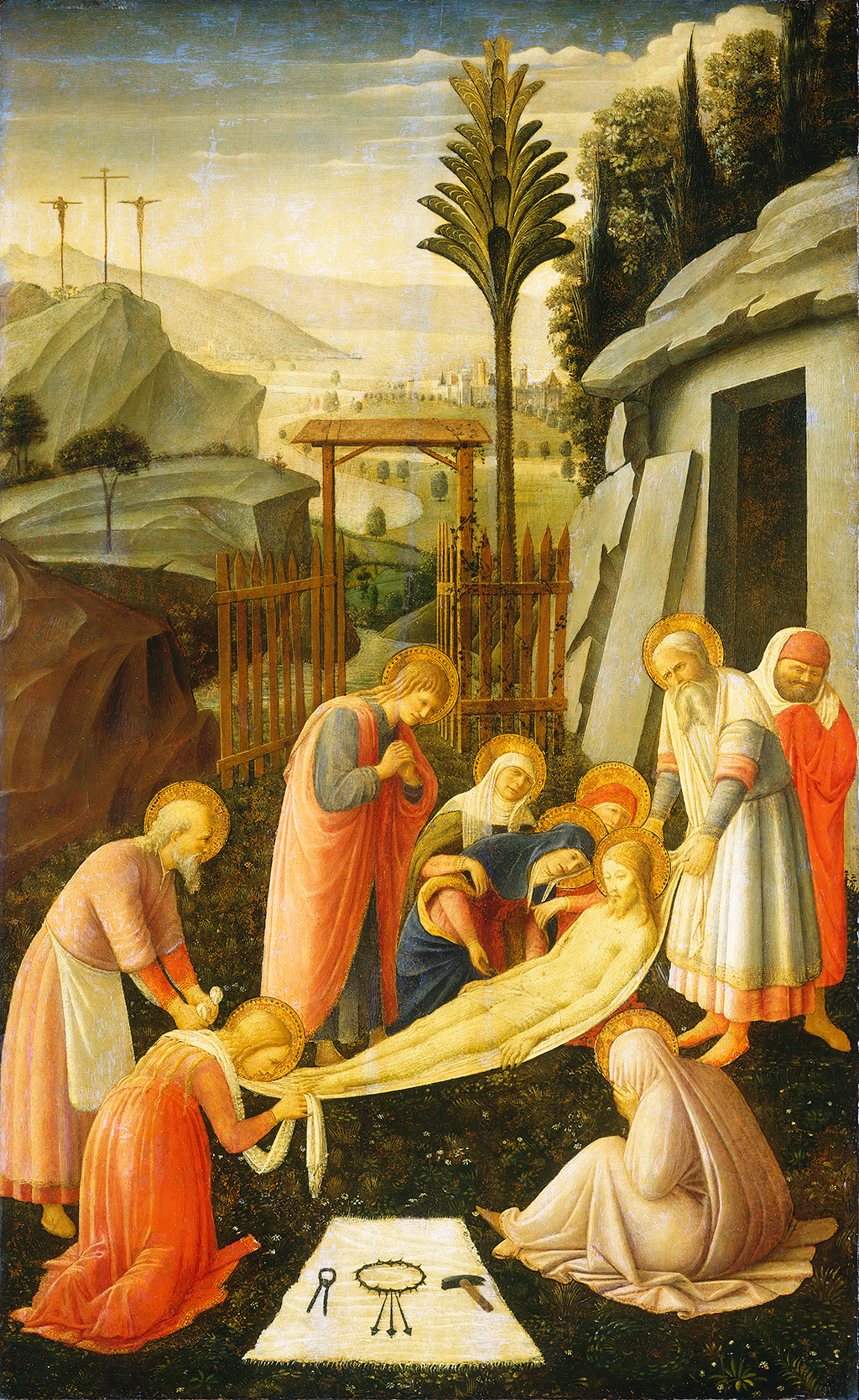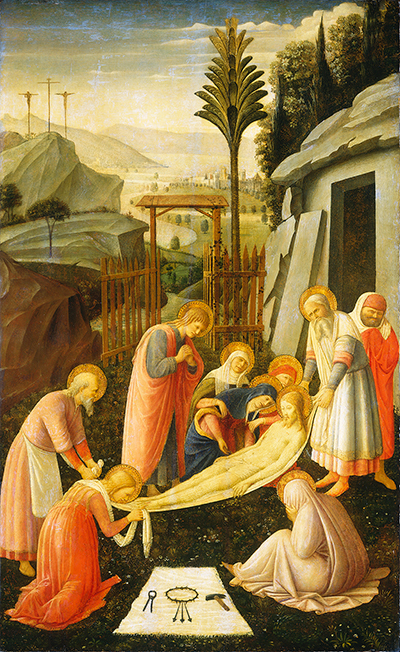The Entombment of Christ is dated at circa 1450, placing it towards the end of the career of its creator - Fra Angelico. It today resides within the respected collection of the National Gallery of Art in the USA.
There are several memorable elements to this painting which are worth a particular focus. The artist displays his strong handling of landscape across the background, for example, with rolling hills providing great interest. There is also a stone cavern to the right hand side which helps to frame the composition, with a row of trees standing tall just behind. The perspective is therefore carefully constructed, with several layers reaching from the front to the back of the painting. In the foreground appears the main figures who relate directly to the title of the piece, The Entombment of Christ. We find Christ lying on a gold coloured cloth as several of his followers carry him from his original position. A cloth lies in the nearest foreground and several symbolic items have been added to it. The figures helping Christ are sporting halos in golden paint which indicates their divine status and helps the viewer to connect this painting to the original religious texts.
It is often forgotten that many of the Renaissance painters, both in Italy and also Northern Europe, were highly skilled in the landscape genre. The fact that these views of rolling hills are normally included as part of a wider composition meant that specialist landscape art did not appear until several centuries later, but many of the skills were actually already in place. The time of Fra Angelico was more focused on religious themes, and therefore patrons would request that type of content, meaning landscape features was more of an artistic, creative flourish and specialist landscape paintings would simply not have sold at this time.
The painting is believed to have been purchased in around the 1920s or 1930s before being shipped to the US where it was initially put on display for an exhibition. A permanent spot was then later found and it remains in the National Gallery of Art today. The purchase was a single part of a larger batch of work from Italy which included around twenty four paintings in total, which was a real bonus for the US which did not have many Italian Renaissance artworks in its collection at that time. The artist's significance within the Early Renaissance makes this one of the highlights of their collection, although it is today so impressive that it is quite hard to actually narrow their display down to just a handful of stand out artworks. Items that you might be interested in include the likes of Ginevra de' Benci by Leonardo da Vinci, The Emperor in his Study at the Tuileries by Jacques-Louis David and Self Portrait with Beret and Turned-Up Collar by Rembrandt van Rijn.





